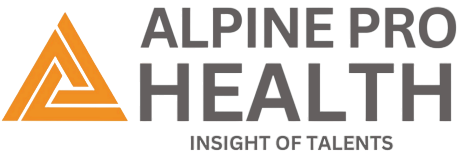In the evolving landscape of healthcare Revenue Cycle Management (RCM), reducing claim denials and improving patient collections are crucial for financial stability. Healthcare providers must implement effective strategies to enhance revenue integrity, optimize cash flow, and ensure compliance with payer regulations. This article explores actionable insights to minimize denials and boost patient collections, ultimately improving the overall revenue cycle Management.
Understanding the Impact of Denials and Patient Collections
Cost of Claim Denials
Claim denials significantly impact a healthcare provider’s financial health. According to industry reports, nearly 10% of claims denials initially, leading to delayed reimbursements, administrative burden, and revenue loss. The primary reasons for denials include:
- Incomplete or incorrect patient information
- Coding errors and lack of documentation
- Failure to meet medical necessity criteria
- Missed filing deadlines
- Insurance eligibility and authorization issues
Challenges in Patient Collections
Patient responsibility has increased due to the rise in high-deductible health plans (HDHPs). Many patients struggle to pay medical bills, leading to bad debt and revenue leakage. Common obstacles include:
- Lack of price transparency
- Ineffective communication regarding financial obligations
- Limited payment options
- Confusion over insurance coverage and out-of-pocket costs
Addressing these issues with robust strategies can enhance the efficiency of revenue cycle processes.
Strategies to Reduce Denials
1. Strengthen Pre-Authorization and Eligibility Verification
A proactive approach to eligibility verification and prior authorization minimizes denials. Healthcare organizations should:
- Verify insurance coverage before service delivery
- Ensure medical necessity requirements are met
- Utilize automated tools for real-time eligibility checks
- Educate staff on payer-specific authorization rules
2. Optimize Medical Coding and Documentation
Accurate medical coding is essential for successful claim submission. Providers should:
- Train coders and clinical staff on ICD-10, CPT, and HCPCS updates
- Implement AI-driven coding audits for accuracy
- Leverage Clinical Documentation Improvement (CDI) programs to ensure complete and compliant documentation
- Regularly review denial trends to address recurring issues
3. Implement Claims Scrubbing and Edits
Advanced claim scrubbing technology can prevent rejections and denials by:
- Detecting coding and billing errors before claim submission
- Flagging incomplete or inconsistent information
- Automating compliance checks based on payer policies
4. Establish a Denial Management and Appeals Process
A structured approach to denial management ensures faster resolution and improved reimbursement. Best practices include:
- Categorizing denials based on reason codes
- Analyzing denial trends and implementing corrective actions
- Establishing a dedicated team for denial resolution
- Tracking appeal success rates to refine strategies
Strategies to Improve Patient Collections
1. Enhance Financial Counseling and Transparency
Patients should have a clear understanding of their financial responsibilities before receiving care. Providers can improve transparency by:
- Offering pre-treatment cost estimates
- Explaining insurance benefits and out-of-pocket costs
- Providing personalized financial counseling sessions
2. Offer Flexible Payment Options
Implementing diverse payment solutions enhances patient collections. Providers should:
- Provide multiple payment methods, including online portals, credit cards, and payment plans
- Offer discounts for upfront payments
- Enable automated recurring payment options
3. Leverage Digital Patient Engagement Tools
Patient engagement platforms streamline the billing and collection process. Features such as:
- Secure online bill payment portals
- Automated payment reminders via SMS and email
- Chatbots and self-service options for billing inquiries
increase collection rates and enhance the patient experience.
4. Implement Proactive Follow-Ups and Collections Policies
Timely follow-ups on outstanding balances prevent revenue leakage. Strategies include:
- Sending reminders before due dates
- Offering financial assistance programs for eligible patients
- Establishing clear policies on outstanding balances and collections
Role of Technology in Revenue Cycle Optimization
Technology-driven solutions enhance efficiency and compliance in RCM.
AI-Powered Analytics and Automation
- Predictive analytics identify high-risk claims before submission
- Machine learning models detect denial patterns and recommend improvements
- AI-driven chatbots assist in patient billing inquiries and payment processing
Revenue Cycle Management (RCM) Software
- Automates claims processing and denial management
- Enhances real-time tracking of collections and reimbursements
- Integrates with Electronic Health Records (EHR) for seamless data exchange
Conclusion
Reducing denials and improving patient collections are essential for sustainable revenue cycle improvement. By implementing proactive eligibility verification, optimized medical coding, automated claim scrubbing, and patient-friendly payment options, healthcare providers can not only enhance financial performance but also ensure compliance. Embracing technology and data-driven strategies ensures long-term revenue cycle efficiency, minimizing losses and maximizing collections.
A well-structured RCM strategy not only improves cash flow but also enhances the patient experience, ultimately leading to better financial outcomes for healthcare organizations. Moreover, by addressing denial prevention and patient collections simultaneously, providers can build a robust revenue cycle framework for long-term success.


